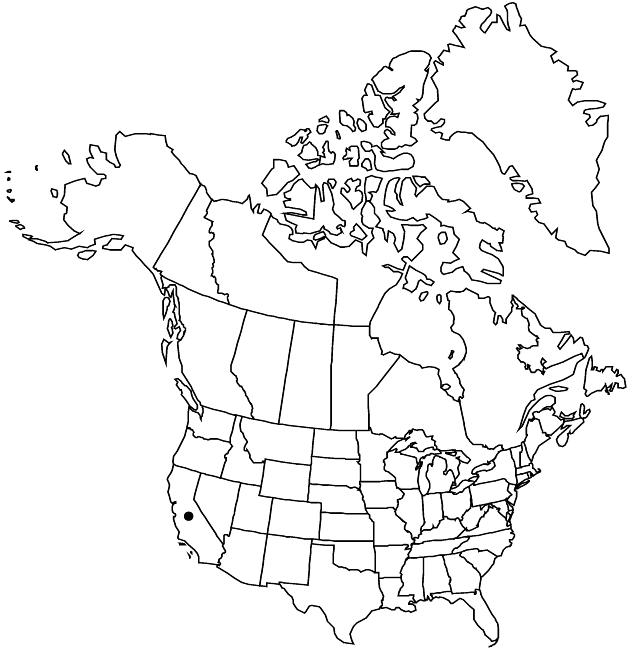Difference between revisions of "Layia septentrionalis"
Aliso 4: 106. 1958.
FNA>Volume Importer |
imported>Volume Importer |
||
| (6 intermediate revisions by 2 users not shown) | |||
| Line 6: | Line 6: | ||
|place=4: 106. 1958 | |place=4: 106. 1958 | ||
|year=1958 | |year=1958 | ||
| + | }} | ||
| + | |special_status={{Treatment/ID/Special_status | ||
| + | |code=E | ||
| + | |label=Endemic | ||
| + | }}{{Treatment/ID/Special_status | ||
| + | |code=C | ||
| + | |label=Conservation concern | ||
}} | }} | ||
|basionyms= | |basionyms= | ||
| Line 24: | Line 31: | ||
|distribution=Calif. | |distribution=Calif. | ||
|discussion=<p>Of conservation concern.</p><!-- | |discussion=<p>Of conservation concern.</p><!-- | ||
| − | --><p>Layia septentrionalis occurs in the central and southern Inner North Coast Ranges and the Sutter Buttes (southern Sacramento Valley).</p> | + | --><p><i>Layia septentrionalis</i> occurs in the central and southern Inner North Coast Ranges and the Sutter Buttes (southern Sacramento Valley).</p> |
|tables= | |tables= | ||
|references= | |references= | ||
| Line 33: | Line 40: | ||
-->{{#Taxon: | -->{{#Taxon: | ||
name=Layia septentrionalis | name=Layia septentrionalis | ||
| − | |||
|authority=D. D. Keck | |authority=D. D. Keck | ||
|rank=species | |rank=species | ||
| Line 47: | Line 53: | ||
|publication title=Aliso | |publication title=Aliso | ||
|publication year=1958 | |publication year=1958 | ||
| − | |special status= | + | |special status=Endemic;Conservation concern |
| − | |source xml=https:// | + | |source xml=https://bitbucket.org/aafc-mbb/fna-data-curation/src/2e0870ddd59836b60bcf96646a41e87ea5a5943a/coarse_grained_fna_xml/V19-20-21/V21_657.xml |
|tribe=Asteraceae tribe Heliantheae | |tribe=Asteraceae tribe Heliantheae | ||
|subtribe=Asteraceae (tribe Heliantheae) subtribe Madiinae | |subtribe=Asteraceae (tribe Heliantheae) subtribe Madiinae | ||
Latest revision as of 20:13, 5 November 2020
Plants 6–35 cm (self-incompatible); glandular, not strongly scented. Stems purple-streaked or not. Leaf blades oblanceolate or lanceolate to linear, 4–70 mm, margins (basal leaves) toothed to pinnatifid. Involucres ± ellipsoid to campanulate, 5–12 × 3–12+ mm. Phyllaries 5–9, apices usually shorter than folded bases. Paleae in 1 series between ray and disc florets. Ray florets 5–9; laminae yellow, 4–15 mm. Disc florets 10–65+, corollas 5–8 mm; anthers yellow to brownish. Ray cypselae glabrous or sparsely hairy. Disc pappi of 16–22 white, ± equal bristles or setiform scales 4–7 mm, each proximally plumose and adaxially woolly. 2n = 16.
Phenology: Flowering Apr–Jun.
Habitat: Grasslands, openings in chaparral, woodlands, on serpentine or sandy soils
Elevation: 100–900 m
Discussion
Of conservation concern.
Layia septentrionalis occurs in the central and southern Inner North Coast Ranges and the Sutter Buttes (southern Sacramento Valley).
Selected References
None.
